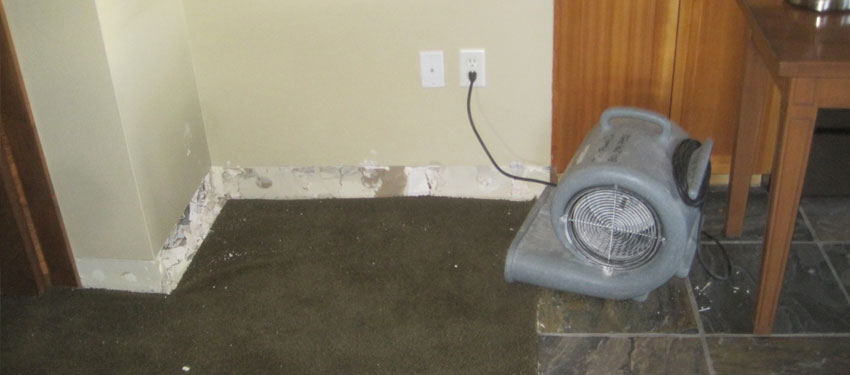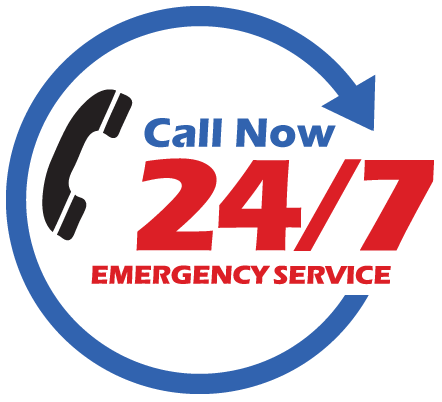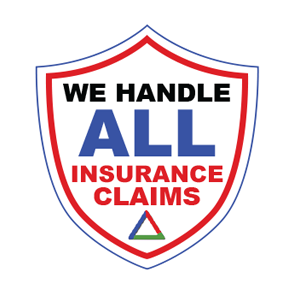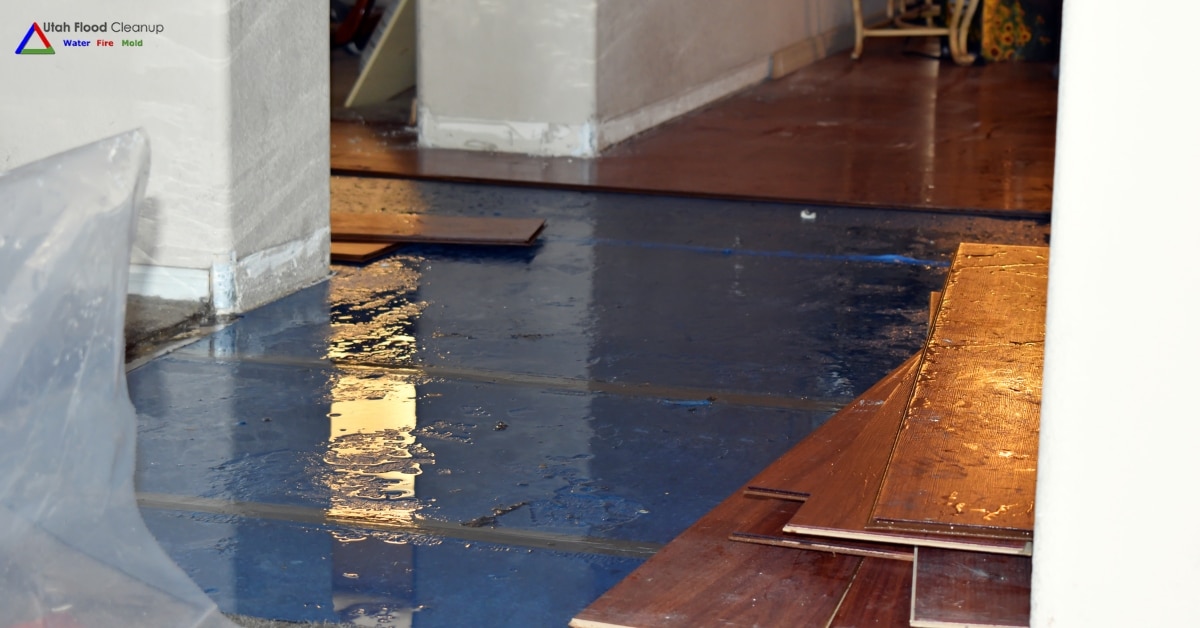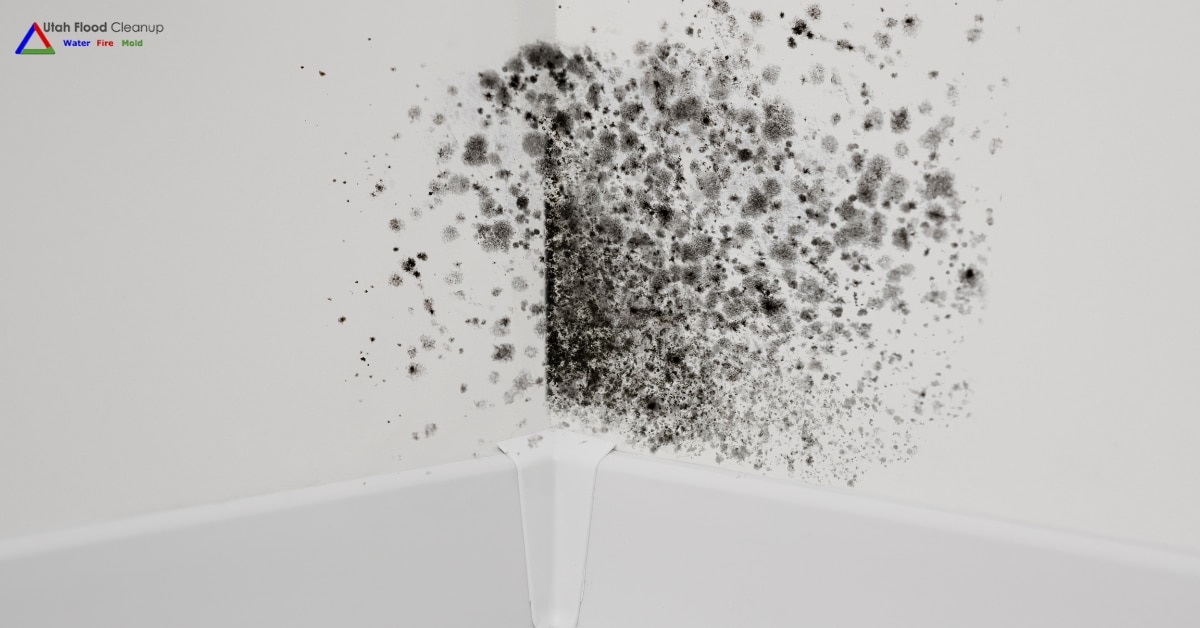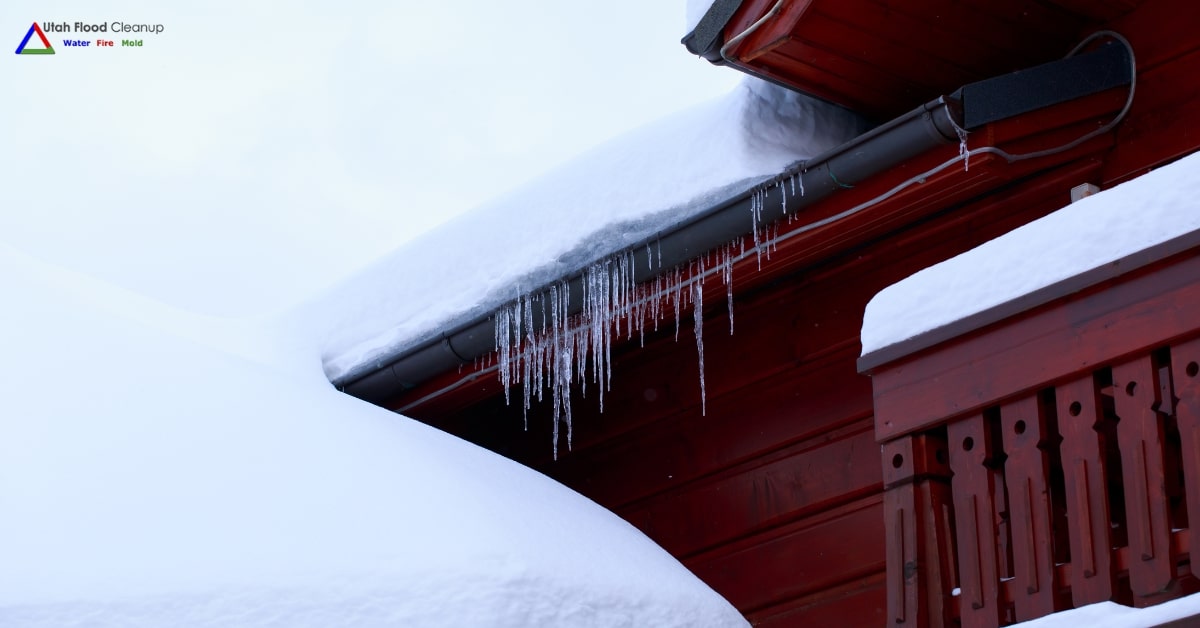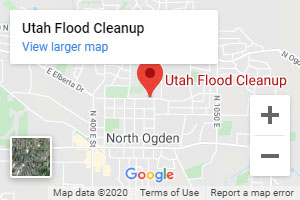Is flood damage affecting you home? Call Utah Flood Cleanup today at (801) 416-2666 and get your home and life back to normal. We are your reliable Salt Lake City Utah flood damage restoration and repair experts.
No matter what the reason for your flooding, it can be a huge hassle to deal with on your own. The damage caused can be significant to the structure of your home and result in an unsafe and uncomfortable living environment. Fortunately, your local Salt Lake City flood damage experts are prepared to fix the problem. Utah Flood Cleanup uses advanced techniques and professional solutions to help get your home back to normal.
Take a look at some of our customer reviews by clicking here.
Utah Flood Cleanup for Flood Damage Restoration
Utah Flood Cleanup is your number one choice for all situations involving flood damage restoration and repair. Our prices will fit your budget and our contractors will get the job done on time. The benefits of using us include:- FREE phone consultation and inspection on insurance-covered water damage incidents
- 24/7 emergency Utah flood damage restoration service (flood damage issues can't wait)
- Expert solutions from licensed and certified restoration technicians
- Long-term quality solutions, 2 year guarantee on workmanship
- Available financing
Ask for your free phone consultation by calling us (801) 416-2666 today.
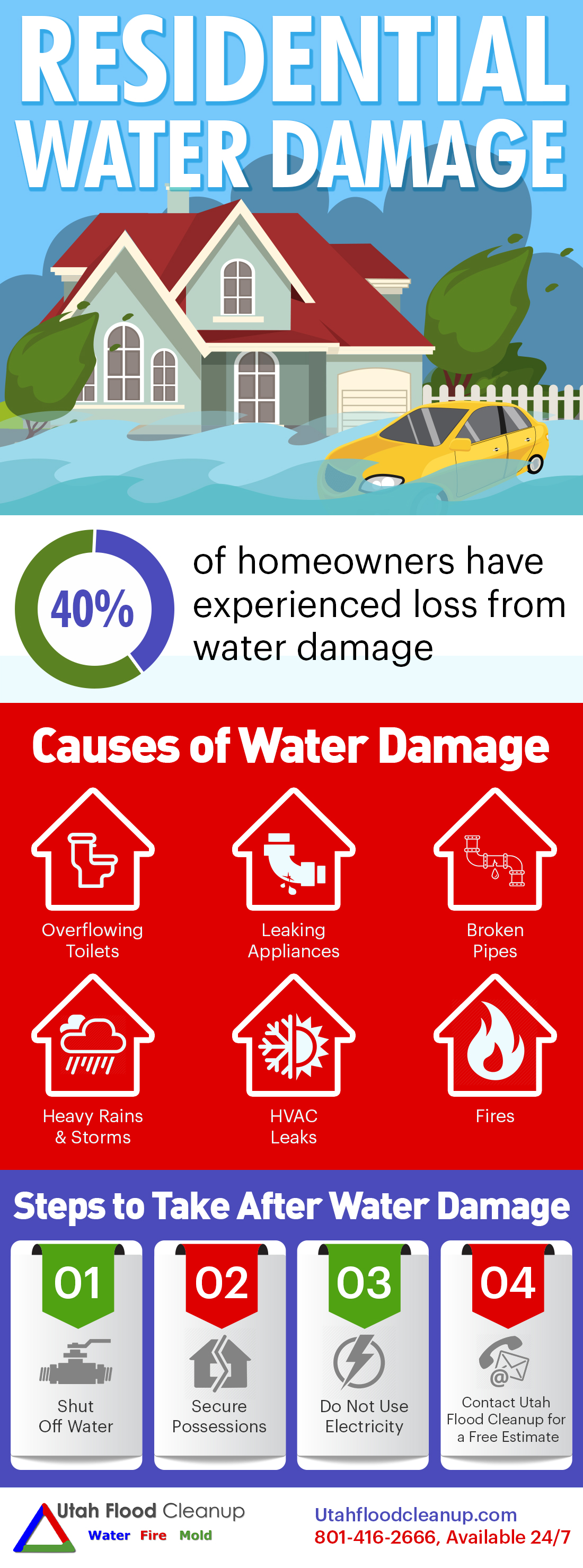
Benefits of Professional Utah Flood Damage Restoration
One problem with home flooding is that the damage caused can be worse than it initially appears to be. Even when the water has been cleared, the growth of mold and mildew can become some of the most significant problem within your home. Once these hazards have set in, professional removal services are required to restore the home to its original condition. It can even be unsafe to walk around your home due to weak floorboards and joints caused by water damage. Pests such as termites are attracted to dank environments which only further necessitates the need of a specialist.Avoid Problems with Timely Repair
It is imperative that you contact a flood damage repair expert as soon as possible after a flood affects your home. Living around and being in contact with mold and mildew can harm the health of you and your family. Those with allergies and respiratory problems are especially susceptible.Weak floorboards and health issues aren't the only things that can be avoided with timely water damage repair. Major electrical problems can also be avoided if you act quickly after a recent flood. As a general rule, the worst damage happens 48 hours after flooding. It is best to get in contact with a professional within that time frame so that you can avoid severe damage to your belongings. We are also able to help you restore these to a like-new conditions.
What To Do Before Help Arrives
What do you if you've already reached out to us and are waiting for our arrival, there are a few things that you can do to lessen the damage and prevent future problems from arising. Remove all members from the flooded areas especially if electrical items have been involved. You may use a sump pump to remove water from your basement or other low-lying area if you own one.As soon as Utah Flood Cleanup arrives we will start working right away on our Utah flood damage restoration process. We use thermal imagine and other damage restoration technology to ensure that all the damage is pinpointed and repaired as efficiently as possible.
Utah Flood Cleanup offers fast flood damage restoration and repair services as well as a complimentary phone consultation. Call and ask about our services today at (801) 416-2666.
Additional damage restoration services in Salt Lake City:
- Salt Lake City Utah Sewage Cleanup
- Salt Lake City Utah Drain Backup
- Salt Lake City Utah Biohazard & Crime Scene Cleanup
- Salt Lake City Utah Air Duct Cleaning
- Salt Lake City Utah Carpet & Upholstery Cleaning
- Salt Lake City Utah Fire Damage Restoration & Repair Services
- Salt Lake City Utah Mold Removal & Remediation Services
- Salt Lake City Utah Water Damage Repair & Restoration
Flood Damage Restoration & Repair Services FAQ
After you receive clearance from the fire department and other safety officials, you will need to go into your home and document the damage done. This includes fire damage, smoke damage, and water damage. For fire damage in Utah, Utah Flood Cleanup can help restore your home.
This documentation will be important for your insurance claims. Every homeowner’s insurance policy can be a little different, but the more detail you have regarding the damage that was done by this disaster the better.
Several factors can lead to water damage in your house. One of the biggest concerns is issues with your home’s plumbing. Old pipes can leak or burst, especially in extreme cold weather. Blockages in your home’s drain lines can cause back-ups that flood into your kitchen, laundry, or bathroom.
Certain parts of your home are also vulnerable to weather-related water damage. These areas include your crawlspace, attic, and basement.
The water damage restoration process is a fairly involved one. First, we need to deal with all the standing water in your home. Next, we';ll dehumidify your home with industrial-strength dehumidifiers, often over the course of several days. When that’s done, we’ll use specialized equipment to test whether your home is sufficiently dry.
If the flooding is severe enough, some flooring and drywall may need to be replaced, too.
So what isn’t considered “sudden and internal”? External floods or damage from slow leaks or gradual deterioration. You’ll be on the hook for damages of these types unless your homeowners policy states otherwise or you have flood insurance.
Yes, if the damage is flood-related (think rising water from an overflowing source). If the damage comes from above (think roof and attic), your homeowners insurance is likely to cover it instead.
That said, some homeowners living in flood-prone areas may be required to purchase flood insurance. It’s possible that some may be paying for it and not realize they have it, so be sure to check.
